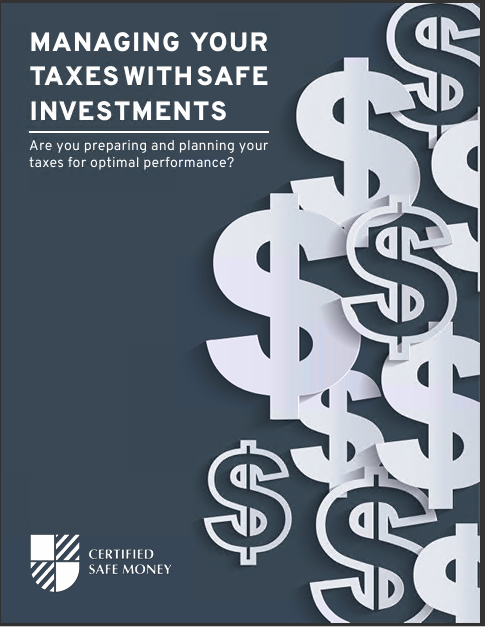Key Takeaways:
- Fixed Index Annuities (FIAs) offer a unique blend of growth potential with protection against market downturns, making them suitable for risk-averse investors seeking steady income.
- Traditional IRAs provide tax advantages and investment flexibility, allowing for more personalized retirement planning but exposing the account to market volatility.
Fixed Index Annuities vs. Traditional IRAs: Which One Should You Pick?
When planning for retirement, the array of financial products available can be overwhelming. Fixed Index Annuities (FIAs) and Traditional Individual Retirement Accounts (IRAs) stand out as popular choices for securing your financial future. However, these two options serve different purposes and cater to different investment profiles. Understanding the distinctions between FIAs and Traditional IRAs is crucial to making the right choice for your retirement strategy.
The Structure of Fixed Index Annuities
Fixed Index Annuities are a type of insurance product that offers a combination of fixed interest with the potential for additional earnings based on the performance of a specific market index, such as the S&P 500. Unlike direct investments in the stock market, FIAs offer protection against market losses while still providing the possibility of growth.
Growth with Protection: FIAs are designed to limit the risk of loss while offering growth tied to the market index’s performance. If the index increases, you receive a portion of that gain, up to a cap. However, if the index declines, your principal remains protected, ensuring that your account doesn’t lose value due to market downturns.
Income Guarantees: Many FIAs come with the option of a lifetime income rider, which guarantees a steady income stream for life, making it a viable option for retirees seeking predictable income. This feature is particularly appealing to those who prioritize financial stability in their later years.
Surrender Periods and Caps: One of the key considerations with FIAs is the surrender period, during which withdrawals may incur penalties. Additionally, the cap on earnings means that while your investment is protected from losses, it is also limited in terms of potential gains.
Understanding Traditional IRAs
Traditional IRAs are tax-advantaged retirement accounts that allow individuals to invest in a wide range of assets, including stocks, bonds, mutual funds, and ETFs. The contributions to a Traditional IRA are often tax-deductible, and the investments grow tax-deferred until withdrawal during retirement.
Tax Advantages: The primary appeal of a Traditional IRA lies in its tax benefits. Contributions may reduce your taxable income in the year they are made, and your investment earnings grow tax-deferred, meaning you won’t pay taxes on the gains until you withdraw the funds.
Investment Flexibility: Traditional IRAs offer significant flexibility in terms of investment choices, allowing you to tailor your portfolio to your risk tolerance and retirement goals. This flexibility can result in substantial growth potential, especially if you have a long investment horizon.
Required Minimum Distributions (RMDs): Once you reach the age of 73 (as of 2024), you are required to start taking RMDs from your Traditional IRA, which are taxed as ordinary income. This is a critical factor to consider, as failing to take RMDs can result in hefty penalties.
Comparing Risk and Reward
One of the most significant differences between FIAs and Traditional IRAs lies in the balance of risk and reward.
Risk Mitigation with FIAs: FIAs are designed for conservative investors who prioritize capital preservation and steady income over high returns. The protection against market losses makes FIAs an attractive option for those who are nearing retirement and cannot afford significant losses.
Market Exposure with IRAs: Traditional IRAs, on the other hand, expose your investments to the full volatility of the market. While this comes with higher risk, it also offers greater potential for growth. Younger investors with a longer time horizon may prefer this option to maximize their retirement savings.
Liquidity Considerations: Liquidity is another crucial aspect when choosing between FIAs and Traditional IRAs. FIAs typically have surrender periods, during which withdrawing funds can incur penalties. In contrast, Traditional IRAs allow for more flexibility in accessing your money, although early withdrawals before age 59½ may be subject to taxes and penalties.
Customizing Your Retirement Strategy
Deciding between FIAs and Traditional IRAs depends on your individual financial situation, retirement goals, and risk tolerance. Often, the best strategy may involve a combination of both.
Blending Stability and Growth: For many investors, a balanced approach that includes both FIAs and Traditional IRAs can provide a blend of stability and growth. By allocating a portion of your retirement savings to an FIA, you can secure a guaranteed income stream, while the remainder invested in a Traditional IRA can grow more aggressively over time.
Evaluating Your Time Horizon: Your age and proximity to retirement play a critical role in determining the appropriate allocation between FIAs and IRAs. Younger investors may lean more heavily towards Traditional IRAs to take advantage of compounding growth, while those closer to retirement might prioritize the security offered by FIAs.
Adapting to Market Conditions: The financial markets in 2024 are unpredictable, making it essential to periodically reassess your retirement strategy. If the market is experiencing high volatility, increasing your allocation to FIAs could provide peace of mind. Conversely, in a strong bull market, you might opt to increase your exposure to equities within your Traditional IRA.
The Role of Tax Planning
Tax considerations are integral to choosing between FIAs and Traditional IRAs. While both offer tax advantages, they do so in different ways.
Tax-Deferred Growth in FIAs: The earnings within an FIA grow on a tax-deferred basis, meaning you won’t pay taxes until you withdraw the money. This can be advantageous for those in higher tax brackets during their working years, as it allows you to defer taxes until retirement when you may be in a lower tax bracket.
Immediate Tax Benefits of IRAs: Contributions to a Traditional IRA may be tax-deductible, providing an immediate tax benefit. This feature can reduce your taxable income for the year, potentially lowering your tax bill. However, remember that RMDs will be taxed as ordinary income when you begin withdrawals.
Impact on Social Security: The tax treatment of withdrawals from FIAs and Traditional IRAs can also affect your Social Security benefits. Large withdrawals from a Traditional IRA could push you into a higher tax bracket, potentially increasing the tax on your Social Security income. Conversely, annuity payments from an FIA might be structured to minimize this impact.
Long-Term Considerations
Both FIAs and Traditional IRAs are long-term financial products, but their long-term benefits and drawbacks differ.
Longevity Risk Mitigation with FIAs: FIAs can be particularly beneficial for those concerned about outliving their savings. The guaranteed income provided by a lifetime income rider can offer financial security well into your later years, helping to mitigate the risk of outliving your assets.
Wealth Accumulation with IRAs: Traditional IRAs offer greater potential for wealth accumulation, especially if you have a long investment horizon. The ability to invest in a diverse portfolio means you can take advantage of market growth over time, potentially resulting in a larger nest egg by the time you retire.
Estate Planning: Consider how each option fits into your overall estate plan. FIAs often allow you to name a beneficiary, ensuring that any remaining funds go to your loved ones. Traditional IRAs can also be passed on to heirs, but they will be subject to taxes, and beneficiaries will be required to take RMDs.
Navigating Retirement in 2024
As we move further into 2024, the economic landscape continues to evolve, making it essential to stay informed and adaptable in your retirement planning.
Adjusting to Inflation: Inflation is a key concern for retirees, as it erodes the purchasing power of fixed income streams. FIAs often come with features that adjust payments to keep pace with inflation, but it’s essential to choose an annuity with this option. On the other hand, Traditional IRAs allow you to invest in assets that may outpace inflation, such as equities.
Understanding Market Trends: The financial markets in 2024 are likely to experience fluctuations, making it crucial to monitor trends and adjust your investment strategy accordingly. For instance, if interest rates rise, the value of bonds within a Traditional IRA may decrease, necessitating a reallocation of assets.
Planning for Healthcare Costs: Healthcare is a significant expense in retirement, and planning for these costs is critical. FIAs can provide a predictable income stream to help cover healthcare expenses, while the growth potential of a Traditional IRA may offer more flexibility in funding unexpected costs.
Making the Final Decision
Choosing between Fixed Index Annuities and Traditional IRAs is a deeply personal decision that should be based on your financial goals, risk tolerance, and retirement timeline. Consider consulting with a financial advisor to help determine the best strategy for your unique situation.
Peace of Mind with FIAs: If you prioritize security and a guaranteed income stream, FIAs may be the better choice, particularly if you are risk-averse or nearing retirement.
Growth Potential with IRAs: For those willing to take on more risk for the potential of higher returns, a Traditional IRA might be more suitable, especially if you have a longer time horizon.
The Right Fit for Your Retirement
Ultimately, the decision between Fixed Index Annuities and Traditional IRAs should align with your retirement goals and financial situation. By understanding the benefits and limitations of each, you can craft a retirement plan that offers both security and growth, ensuring a comfortable and financially stable future.














